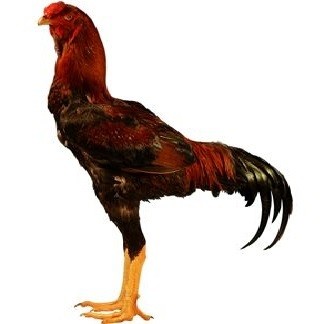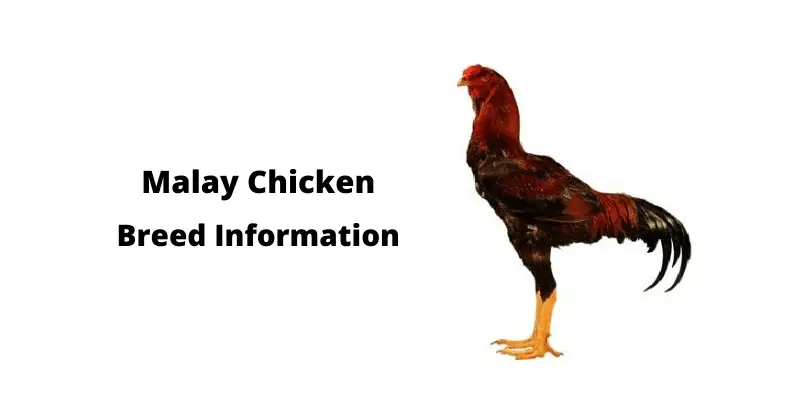Last Updated on January 14, 2025 by Pauline G. Carter
In 1830, a giant size chicken breed was imported to England and became fashionable. English breeders selectively bred them because of their impeccable height.
In 1845, Malay chickens were shown at the first British poultry exhibition. The first edition of the British Poultry Standards in 1865 was included in the Standard of Excellence list.
This chicken breed was introduced to the United States in 1846. During the early decades of the 19th century, these large birds were wide-spreading in Northern India, Indonesia, and the Malay Peninsula.
It was from Asian origin but was bred principally in Europe, in Australia and in the United States. It was also partly derived from Devon and Cornwall in South-west England which is the common first port of call for Indian Men returning.
Malay Chicken | Breed Profile

| Country of origin: | Southeast Asia |
| Primary use: | Meat |
| Weight: | Male: Standard: about 5 kg Bantam: 1190–1360 g Female: Standard: about 4.1 kg Bantam: 1020–1130 g |
| Temperament: | Aggressive |
| Recognized varieties: | Black, Black Breasted Red, Red Pyle, Spangled, Wheaten, White |
| Egg production (annual): | 120 |
| Egg color: | Light-brown |
| Egg size: | Medium |
| Comb type: | Strawberry |
Characteristics Of The Malay Chicken
Malay chicken is the tallest chicken breed and is the first Bantamised breed. At the turn of the 20th century, a dwarf version was created. It is a breed of game chicken. Considered the tallest chicken breed in chickens’ history, it may stand taller than 26″ to 30″.
It has a perfect combination of long legs, long necks and upright body carriage. Aside from their upright stance and a well-muscled form or heavy bones,a short-stout beak carries a large skull bearing cruel expression.
They can eat grains from the top of a barrel and even on a standard dining table. They roar –as in the cock is hoarse, short and monotonous. They possess yellow legs with large scales. When they rest their shanks on the ground, they seem much taller than other breeds.
It has a low and thick comb that looks like a strawberry. Contributing to their snaky and cruel look is their short, broad and short beak.
Behavior/ Temperament/ Use
Malay chicken breed’s primary uses are meat and breeders keep them for poultry shows. They are hard-feathered game fowls. Hens are poor and seasonal layers though they are good mothers to their chicks.
The males are cruel to their chicks. Young hen’s egg production is 120 medium-sized while older hens can lay up to 55 eggs annually. Their egg color is light brown. Chicks are quite delicate but the adults can be very hardy.
This Asian, hard-feathered chicken recognized a variety of Black Breasted Red in 1883 by the American Poultry Association. Spangled, Wheaten, Red Pyle, Black and White were recognized only in 1981.
Their gait is heavy and when tired, they tend to rest their shanks on the ground. This chicken breed’s temperament is aggressive. They are quarrelsome especially when put into confinement and are prone to eating each other’s feathers.
The standard weight of male Malay chicken is about 5 kilos while females are about 4.1 kilos. Bantam males weigh 1190 to 1360 grams while Bantam females weigh about 1020 to 1130 grams each.
What We Liked/Pros
- Tallest chicken in the world.
- Great foragers.
- Game chickens.
- Great for show and exhibition – has long legs and neck with an upright carriage.
- Has a very regal bearing.
- Always ready to fight.
What We Don’t Like/Con
- Does not bear confinement well.
- Aggressive.
- Tends to fight to eat other’s feathers.
- Very minimal egg layer.

